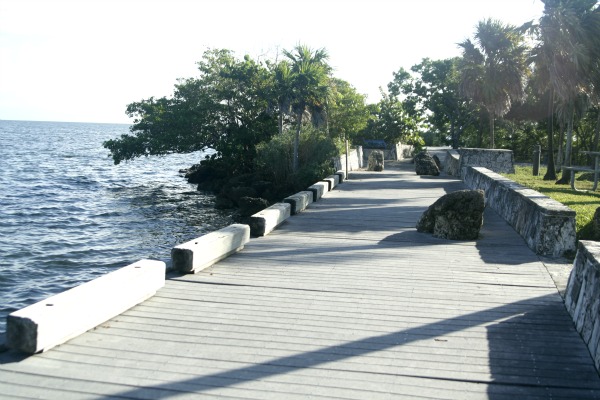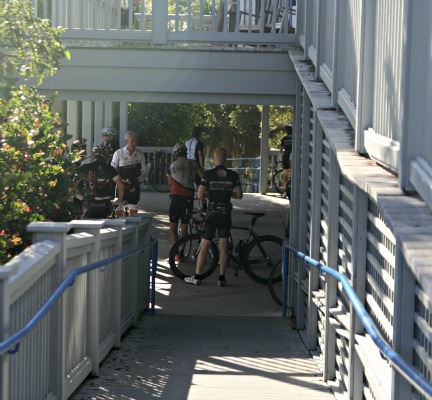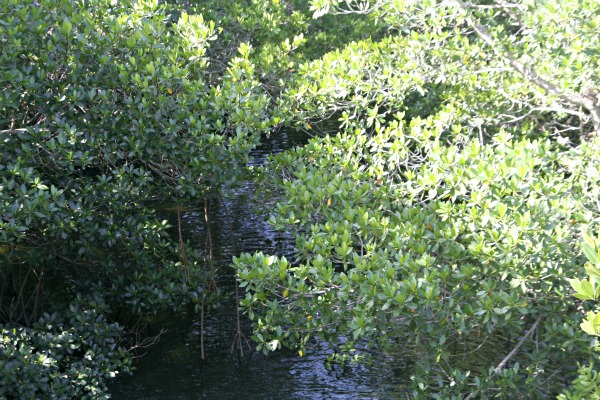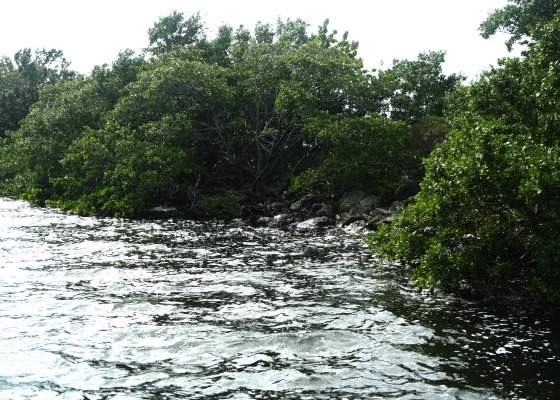
Tropical storms leave their marks on park
HOMESTEAD, Fla. — Hurricane Sandy, which was later renamed Superstorm Sandy after its devastating effects on the northeast, left many people without power, running water or without a home.
Fortunately, the harsh effects that were felt in the northeast did not affect Florida to that extent. But Biscayne National Park was one of the places in Florida that didn’t escape so easily from Hurricane Sandy.
| Click on the video at the left to view an audio slideshow about storm damage at Biscayne National Park narrated and prepared by writer Daniela Rodriguez. |
Most of Elliott Key, Biscayne National Park’s largest island, was closed from public access for two days after moderate damage was done to the island’s camping area as well as the harbors where the visitors with boats can dock their boat.
But after careful review of the island and the damage it incurred, it was recently opened earlier this month, but only parts of it.
The harbor, oceanside boardwalk and portions of the island’s campground remain closed indefinitely, since it will take some time to repair and cleanup the area.
| At right, walking the boardwalk around the Visitor Center at Biscayne National Park, endless ocean scenery can be viewed (Photos by Daniela Rodriguez). Below, the presence of cyclists is very prevalent at Biscayne National Park. They like to meet there in groups to regroup and take a break. |  |
The University Dock, Spite Highway, restrooms, the Oceanside group campsite and bayside family camping areas are all open to the public.
The dock south of the harbor is closed to the public since it suffered the greatest damage.
 Currently, only small vessels, such as canoes, kayaks and other small boats that can be hand-carried from the shoreline are allowed to get to the island. Vessels, such as large boats, or visitors coming from across the bay and need the dock, will not be able to get to the island.
Currently, only small vessels, such as canoes, kayaks and other small boats that can be hand-carried from the shoreline are allowed to get to the island. Vessels, such as large boats, or visitors coming from across the bay and need the dock, will not be able to get to the island.
“We realize that opening an island without reopening the harbor makes it a difficult situation for many of our visitors,” said Biscayne National Park Superintendent Mark Lewis in a news release.
There was also a buildup of debris on the island that interfered with the habitat of a sea turtle nesting area.
Volunteers from the Coastal Cleanup Corporation provided their time and effort to cleaning up the debris left by Hurricane Sandy.
The Coastal Cleanup Corporation is a non-profit organization with 501(c)3 public charity status founded in 2011. Their mission is to remove marine debris from the southeast Florida coastline and to educate citizens about the problem of marine debris in the water.
With some funding by the Sea Turtle Conservancy program, they are able to get the supplies needed to cleanup, such as bags to dispose the debris in and safety supplies to prevent exposure to any harmful substances.
Since Hurricane Andrew in 1992, where Biscayne National Park suffered severe damage, the park created a detailed plan called the Hurricane Plan for the protection of life and property, while also taking into account the needs of employees to prepare their own homes and families for an incoming storm.
This plan is updated annually and is edited when needed to tailor to the anticipated intensity of the storm.
Some of the preparations that are done are securing and shuttering all park buildings, moving the park’s entire fleet of boats, which is over 20 boats, out of the water, posting closure signs throughout the park and providing updated information to the public via Biscayne’s website and the park’s information line.
But according to a 2006 report by the National Parks Conservation Association, NPCA assessed Biscayne National Park and gave the park a score of 58 out of 100, which ranks park resources in poor condition.
| At right, trees provide a lot of shade by the Visitor Center at Biscayne National Park, where a lot of birds make it their home. Below, Hurricane Sandy washed up a lot of debris onto the shore, which affected the health of the plant-life at Biscayne National Park. |  |
When it was assessed, the NPCA pointed out that the park faced a comprised coral reef framework, declines in important fish populations, alteration and destruction of coastal wetlands, and strains to the limited freshwater supply.
The NPCA was created in 2000 to assess the condition of natural and cultural resources in the parks and determine if the parks are well equipped and protected. They provide information and assessments of the parks that will help policy-makers, the public and the National Park Service improve conditions in national parks.
Many hurricanes, such as Ike, Isaac and Sandy, add more strain to the already poor conditions NPCA said Biscayne National Park already had. But NPCA mentions in their report that with the proper funding, Biscayne National Park could dramatically improve its park resources.
 Biscayne’s base budget has increased by just two percent from 2001, with a total fiscal budget of $3.53 million in 2005. The park would need a base budget increase of at least $465,000 to increase law enforcement and maintenance capabilities.
Biscayne’s base budget has increased by just two percent from 2001, with a total fiscal budget of $3.53 million in 2005. The park would need a base budget increase of at least $465,000 to increase law enforcement and maintenance capabilities.
“We are understaffed and have less money than before. There are 32 docks and 17 of them are damaged, so repairing these docks are a priority to bring in revenue for the park,” said Astrid Rybeck, a park ranger at Biscayne National Park.
Rybeck, who is also the incident command manager at Biscayne National Park, believes that without the necessary funds, the recovery process is deeply affected.
“Making sure the park is safe is our number one goal. We have to protect the integrity of the park,” said Rybeck.
If You Go
Biscayne National Park
9700 SW 328 St.,
Homestead, Fla. 33033
http://www.nps.gov/bisc/index.htm
Visitor Information
305-230-7275
Boat tours, snorkeling, SCUBA diving and gift shop
305-230-1100
Park Administrative Offices
305-230-1144
Fisheries Education Class/Grounding Awareness Class
305-230-1144, ext. 036

Comments are Closed